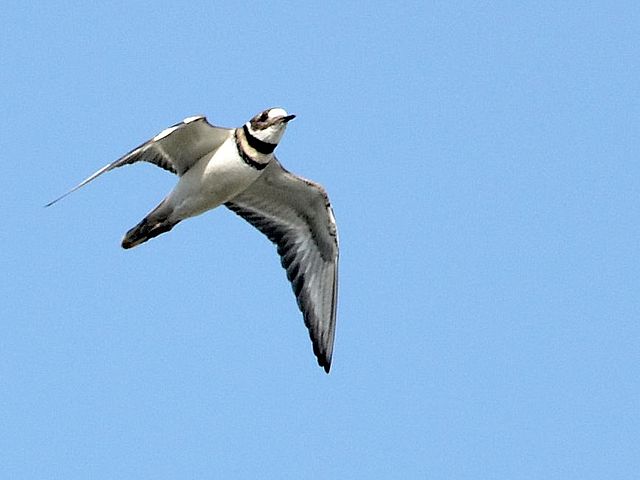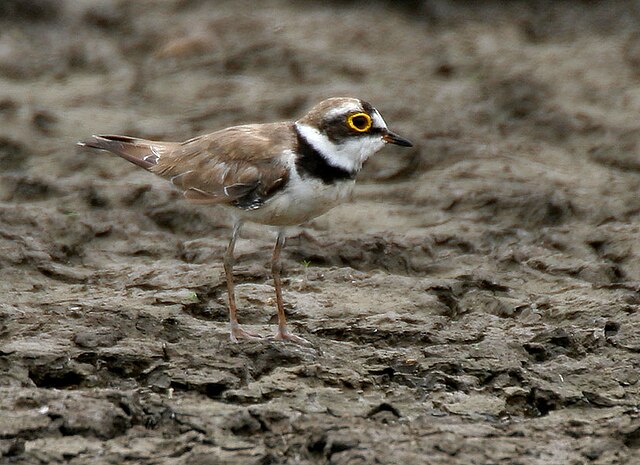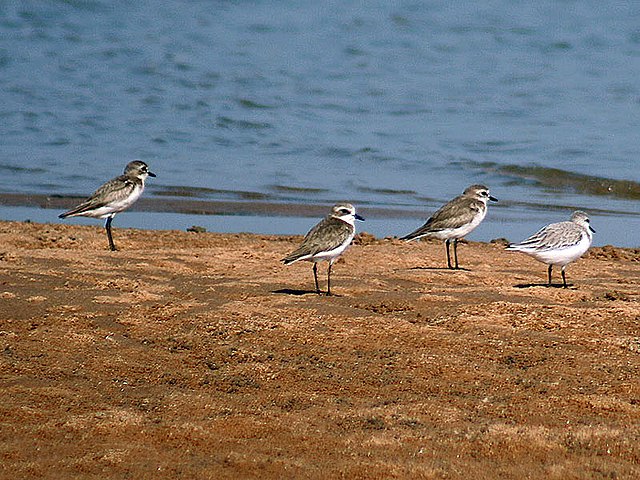The killdeer is a large plover found in the Americas. It gets its name from its shrill, two-syllable call, which is often heard. It was described and given its current scientific name in 1758 by Carl Linnaeus in the 10th edition of his Systema Naturae. Three subspecies are described. Its upperparts are mostly brown with rufous fringes, the head has patches of white and black, and two black bands cross the breast. The belly and the rest of the breast are white. The nominate subspecies breeds from southeastern Alaska and southern Canada to Mexico. It is seen year-round in the southern half of its breeding range; the subspecies C. v. ternominatus is resident in the West Indies, and C. v. peruvianus inhabits Peru and surrounding South American countries throughout the year. North American breeders winter from their resident range south to Central America, the West Indies, and the northernmost portions of South America.
In flight
The subspecies C. v. ternominatus in Cuba
Copulation
A female on a nest in Pennsylvania
Plovers are members of a widely distributed group of wading birds of family Charadriidae. The term "plover" applies to all the members of the family, though only about half of them include it in their name.
Plover
Little ringed plover Charadrius dubius
Kentish plover Anarhynchus alexandrinus
Lesser sand plover, Anarhynchus mongolus








